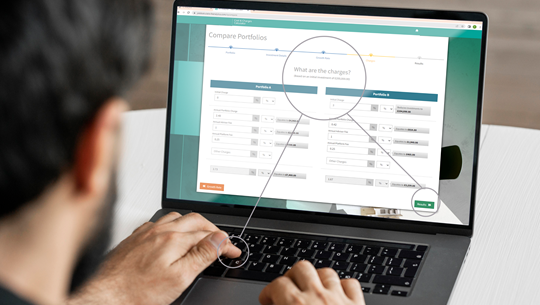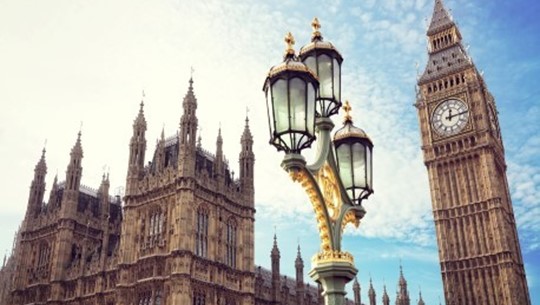The current economic crisis caused by the Covid-19 outbreak is a unique situation. The last 100 years have seen banking crises, stock market crashes and recessions, with the odd depression thrown in for good measure.
These were sometimes inter-linked but there is no common cause for previous recessions. Governments and regulators have a mixed record for dealing with economic crises but what makes the current situation unique is that the economic crisis has been caused deliberately by governments putting economies into suspended animation to prevent an even worse social and health crisis
Whether we are heading for recession is not really in doubt. Initial Q1 GDP figures from China show the first quarterly contraction in almost 40 years and developed economies are expected to follow suit when the first data is published shortly. This is despite the shutdown only being introduced in mid to late March in most countries.
Bank of England chief economist Andy Haldane said this week that shock to the UK’s economy in March is sufficient for Q1 GDP to contract and he expects the figures for Q2 to be ‘very ugly’. The OECD has produced an initial assessment of the damage done to GDP amongst G7 economies. It estimates the shutdown will cut around 2 per cent of annual GDP growth for every month of shutdown with the damage most keenly felt in sectors such as retail, property and transport.
Economic sectors most at risk of partial or complete shutdowns on activity in the G7 economies in 2020
Per cent of GDP in constant prices. Source: OECD, March/April 2020
The rapid economic slowdown and financial market correction has naturally led to speculation about how long any recession will last and what shape the economic recovery will take.
The global economy is going to be on pause for another quarter, at least, and it is impossible to get any meaningful view of the path to recovery until we know the extent of the economic damage the shutdown has caused.
There has been no shortage of predictions about how severe the economic effects of the shutdown will be.
The International Monetary Fund (IMF) has predicted that 3 per cent will be wiped from global GDP this year, with the effect more pronounced in developed economies.
Source: IMF, World Economic Outlook April 2020
In the UK, the Office for Budget Responsibility suggests that each month of full lockdown will reduce monthly output by 35%, reducing annual GDP by 3% for each month the shutdown continues. We’re already more than one month into the shutdown in the UK, with at least another two weeks to go before the situation is reviewed again.
Despite not having a house view on short to medium-term outlook for economic growth, it is helpful to look at the different scenarios that could play out as the response to Covid-19 evolves.
Early speculation that the world was in for a short ‘V-shaped’ recession - a short shutdown followed by equally swift rebound - may be the first of the multiple views of future GDP growth to become a victim of the coronavirus. The Bank of America Merrill Lynch Global Asset Managers Survey for April shows just 15 per cent of fund managers now think we are going to see a swift recovery.
More than 50 per cent of fund managers are expecting a ‘U-shaped’ recovery – a sharp drop in economic activity followed by a period of low or no economic growth followed by a rapid recovery when countries reopen.
Expectations for how long the period of low economic growth will last vary depending on individual countries response to the virus but the longer the shutdown continues, the more severe the impacts will be. The April YPO Chief Executive Global Survey, which includes response from over 3,500 chief executives, shows 64 per cent expect the current crisis to have a negative effect on revenues a year from now.
The most pessimistic scenario is for an ‘L-shaped recovery’, where the sharp drop in economic activity leads to a long period of economic stagnation. This is particularly a risk where the recent rapid rise in unemployment is not quickly corrected and household finances and consumer confidence are damaged.
The final scenario is for a series of shutdowns and rapid recoveries caused by governments having to repeatedly reintroduce restrictions following further outbreaks of Covid-19. This ‘W-shaped’ recovery could be repeated until either a vaccine is developed, aggressive tracing and monitoring is introduced around the world or countries decide the economic cost is too great and it is better to learn to live with the effects of the new disease.
It is too early to say which way we are headed. The longer the shutdown goes on the less likely it is that economies can simply bounce back to pre-crisis levels and the greater the chance that ‘scarring’ will occur.
In addition to the decision on how to deal with the immediate healthcare crisis, the UK now faces a series of choices about how to deal with the economic effects. As Institute for Fiscal Studies director Paul Johnson pointed out recently, perhaps more important than the shape and duration of the recession will be how we react when restrictions are lifted:
Even if the economy is released from lockdown by the summer, the policy priorities and choices facing government will be utterly different from those of what seems like a lifetime ago when it assumed office in December. How it makes those choices could prove even more important than the immediate response to the crisis.”
About FE Investments
FE Investments was born out of FE fundinfo’s expertise in data and analysis. Our Managed Portfolio Service is based on a range of risk-targeted portfolios with a track record stretching back to 2012, Our models are created to focus on the risk within the asset allocation and the underlying funds and we offer Advisers a range of portfolios to cater for a wide range of investor needs.
The price and value of investments and their income fluctuates. You may get back less than you originally invested.
We hope you have found this update helpful. Please get in touch with one of our experts if you have any queries or would like more information on FE Investments’ award-winning Manged Portfolio Service.




